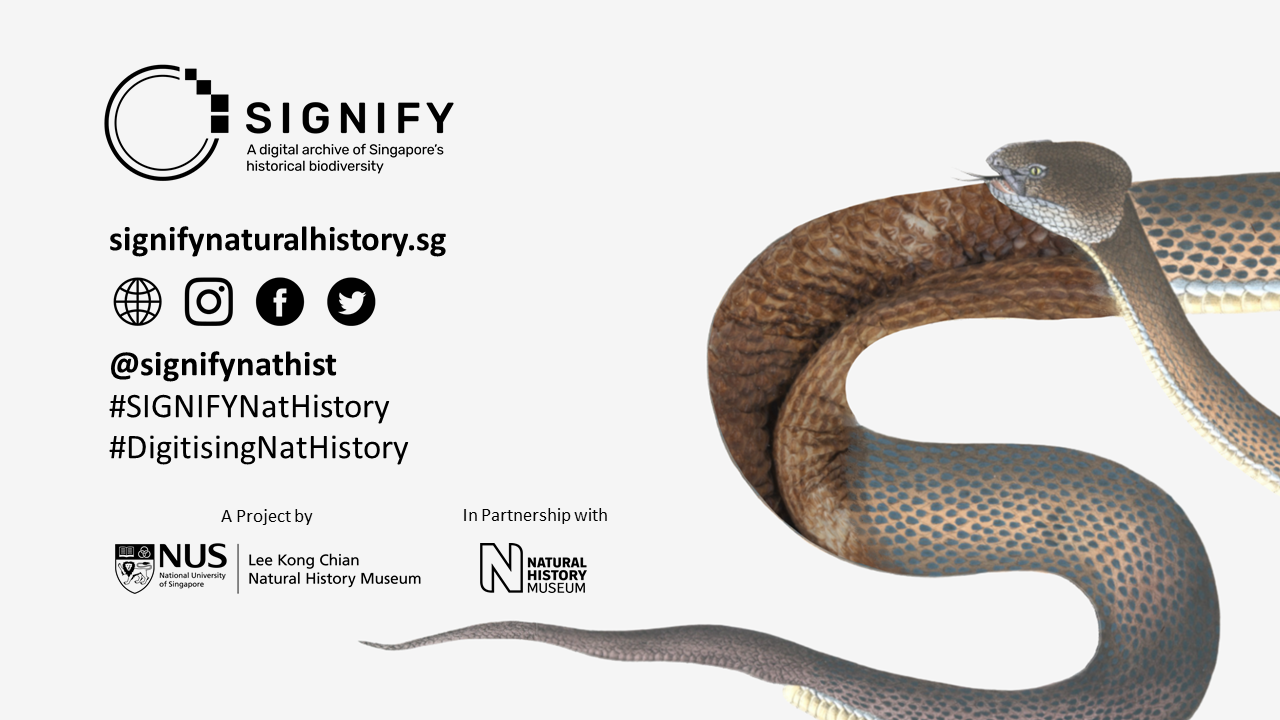Landmark endeavour to digitise 10,000 historically important specimens collected from Singapore over the last 200 years
Today, the Lee Kong Chian Natural History Museum (LKCNHM) at the National University of Singapore and the Natural History Museum in London held the inaugural launch of SIGNIFY: A Digital Archive of Singapore’s Historical Biodiversity which will digitise approximately 10,000 historically-important specimens and type specimens – the exemplars on which scientific names are based – collected from Singapore over the past two centuries. These specimens are currently housed in museums around the world. This is a pioneering project which will make Singapore’s biodiversity historical data accessible for all on the virtual space.
Launch of “A Digital Archive of Singapore’s Historical Biodiversity” at the Natural History Museum and the Lee Kong Chian Natural History Museum
The event took place on Wednesday, 10 August 2022 (4:00–4:30 PM SGT / 9:00–9:30 AM BST) at the Natural History Museum in London, with LIVE virtual participation from LKCNHM in Singapore. Guests of Honour, Mr Tan Chuan-Jin (Speaker of the Parliament of Singapore & Chairman of the Advisory Committee of LKCNHM), Dr Douglas Gurr (Director of the Natural History Museum), Dr Tim Littlewood (Executive Director of Science of the Natural History Museum) and Prof Peter Ng (Principal Investigator of SIGNIFY at LKCNHM) were present for the launch at the Natural History Museum in London. Also present was Mr Lim Thuan Kuan (Singapore High Commissioner to the United Kingdom) who was there to witness the event.
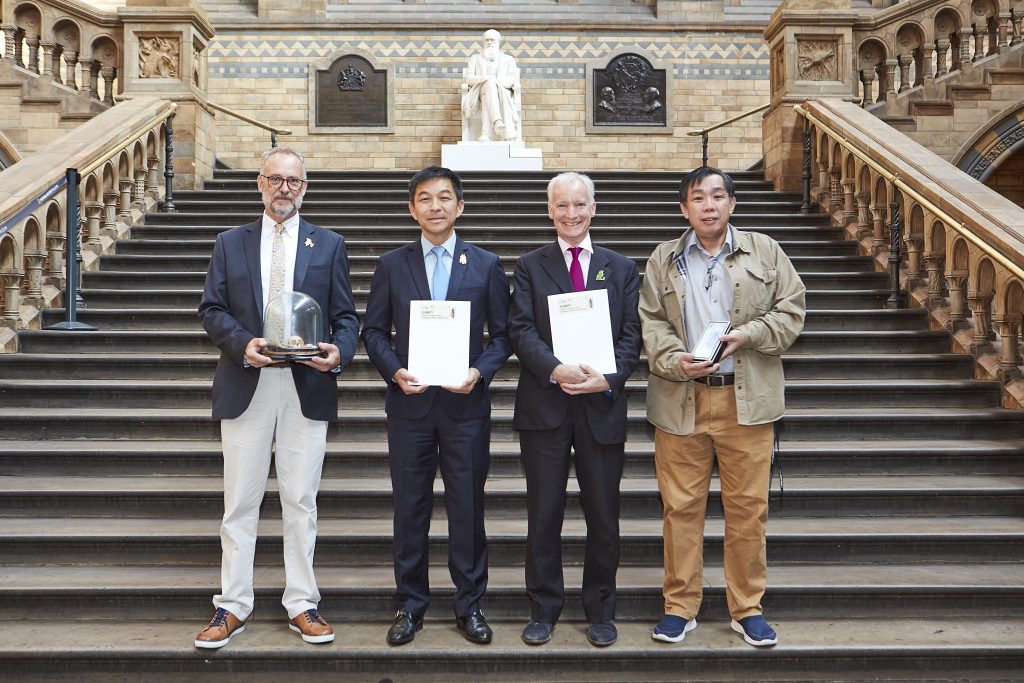
Guests of Honour, Mr Tan Chuan-Jin (Speaker of the Parliament of Singapore & Chairman of the Advisory Committee of LKCNHM) [second from the left] with Dr Douglas Gurr (Director of the Natural History Museum), Dr Tim Littlewood (Executive Director of Science of the Natural History Museum) and Prof Peter Ng (Principal Investigator of SIGNIFY at LKCNHM) at the Natural History Museum in London. (© The Trustees of the Natural History Museum)
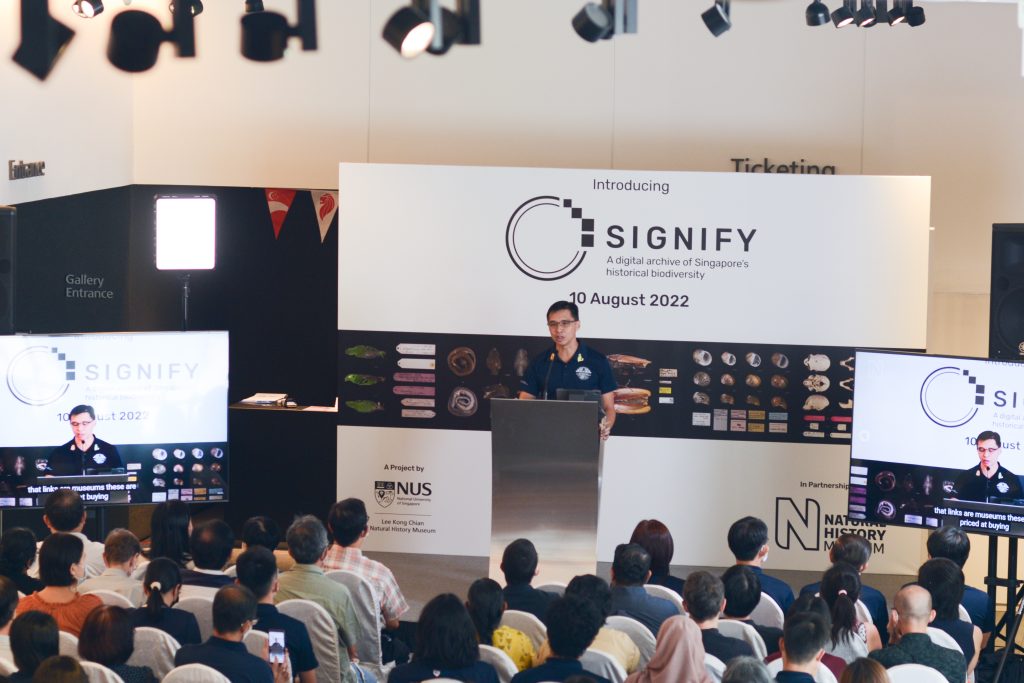
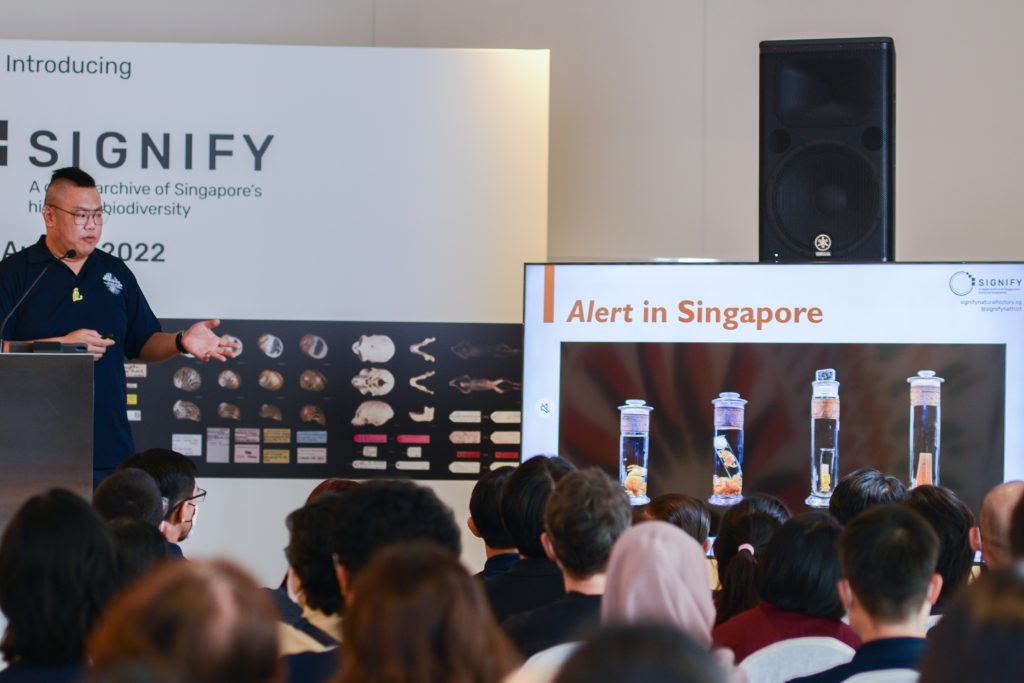
Assoc Prof Darren Yeo, Head of LKCNHM (top), and Mr Martyn Low, Project Manager of SIGNIFY (bottom), at LKCNHM. (Credit: Iffah Iesa)
“This project is a step towards fostering a deeper conservation between history and science – between the past and the present; and by bringing the scientists of both museums – and both countries, the United Kingdom and Singapore – together,” says Mr Tan.
Mr Alex Bamford, Chargé d’Affaires at the British High Commission said, “This valuable project is a testament to the strength and breadth of the UK-Singapore partnership. It will further our understanding of Singapore’s natural heritage as well as its natural environment and foster research collaborations between the two countries. I look forward to the ground-breaking discoveries made possible by this exciting venture.”
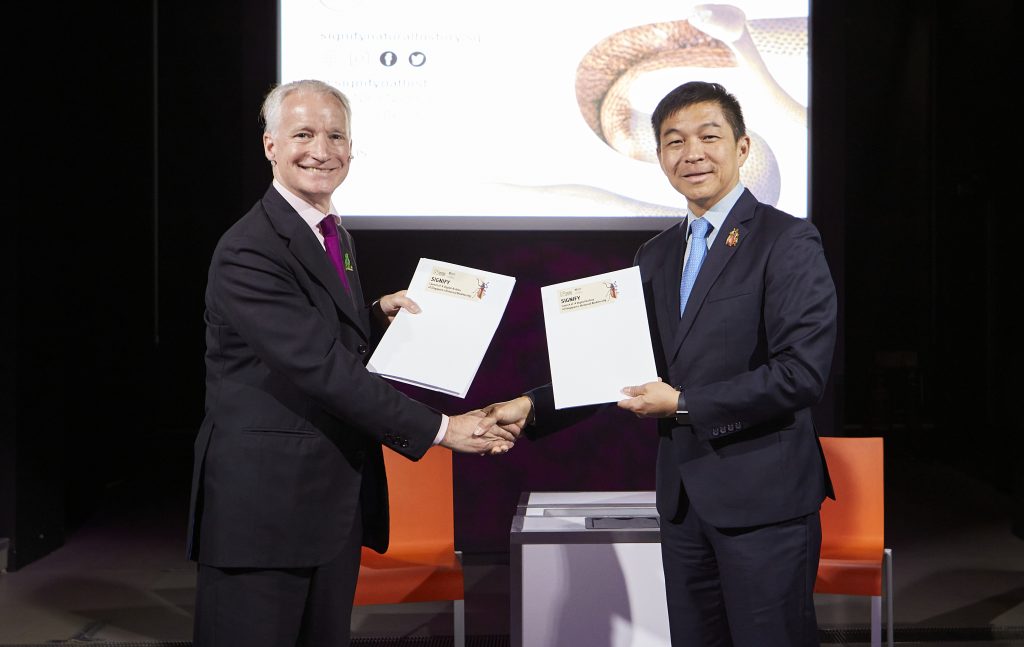
Mr Tan Chuan-Jin and Dr Doug Gurr exchanging the MoU agreements. (© The Trustees of the Natural History Museum)
Introducing SIGNIFY, A Digital Archive of Singapore’s Historical Biodiversity
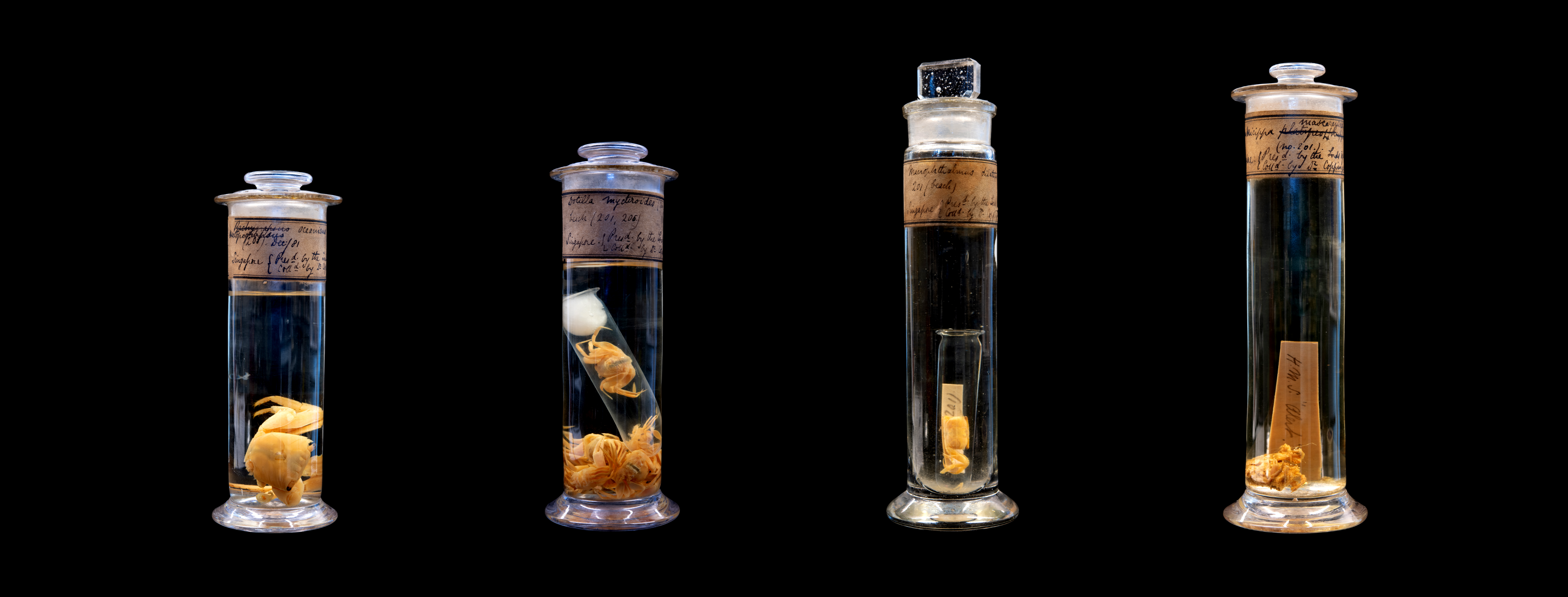
Some of the crustacean specimens collected by a Royal Navy ship — HMS Alert — at a beach in Singapore during its visit in 1881. The project website includes a 360-degree video of these specimens which are currently stored in glass bottles at the Natural History Museum. (Credit: SIGNIFY)
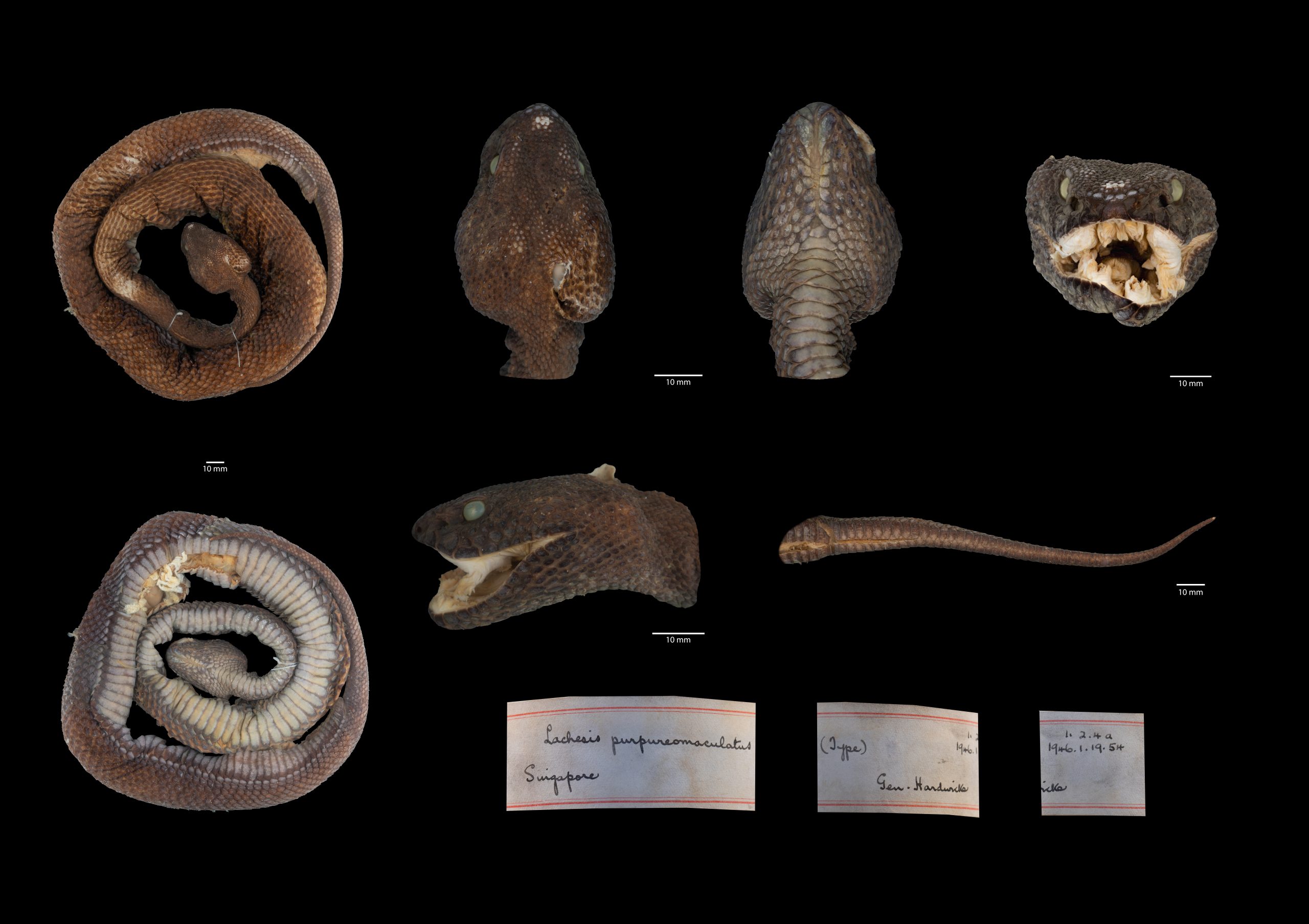
A digitised image of the mangrove pit viper type specimen which is currently housed at the Natural History Museum, London. (Credit: SIGNIFY)
Starting with the digitisation of historically-important specimens held at the Natural History Museum, this landmark venture will provide ‘anyone-anywhere-anytime’ access to these digital specimens. Each digitised specimen will include not just high-resolution images but also accompanying metadata, and where possible, the histories behind them. This rich information will help to deepen our understanding of Singapore’s natural heritage as well as its natural environment.
“Beyond its five-year duration, the project will also provide a rich source of intangibles, including social networks, collecting stories, and snippets of how the scientific study of Singapore’s biodiversity was conducted over the last two centuries. These are invaluable not just in public outreach, engagement and education, but also in nurturing the next generation of scientists, artists, thinkers and shapers,” says Assoc Prof Darren Yeo, Head of LKCNHM.
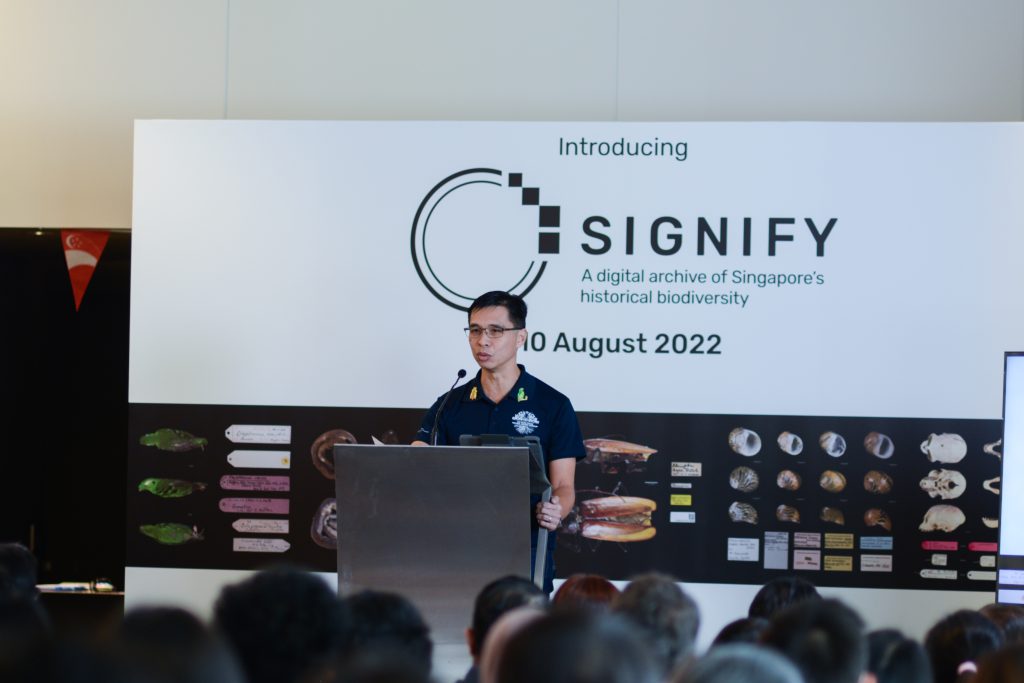
Assoc Prof Darren Yeo, Head of LKCNHM, giving his speech at LKCNHM. (Credit: Iffah Iesa)
Catalysing scientific research and minimising safety risks
A one-stop-for-all repository of scientific and historical information on specimens will also help researchers to speed up their research process.
Prof Peter Ng, Principal Investigator of SIGNIFY and world-renowned carcinologist, explains that, “As a scientist myself, it is very tedious to identify an animal species as one has to go back to historical material to understand what the animal is. Digitising specimens in a high-resolution manner and making this data free for all, will enable scientists, not just in Singapore but from around the world, to catalyse their research and the process of scientific discoveries.”
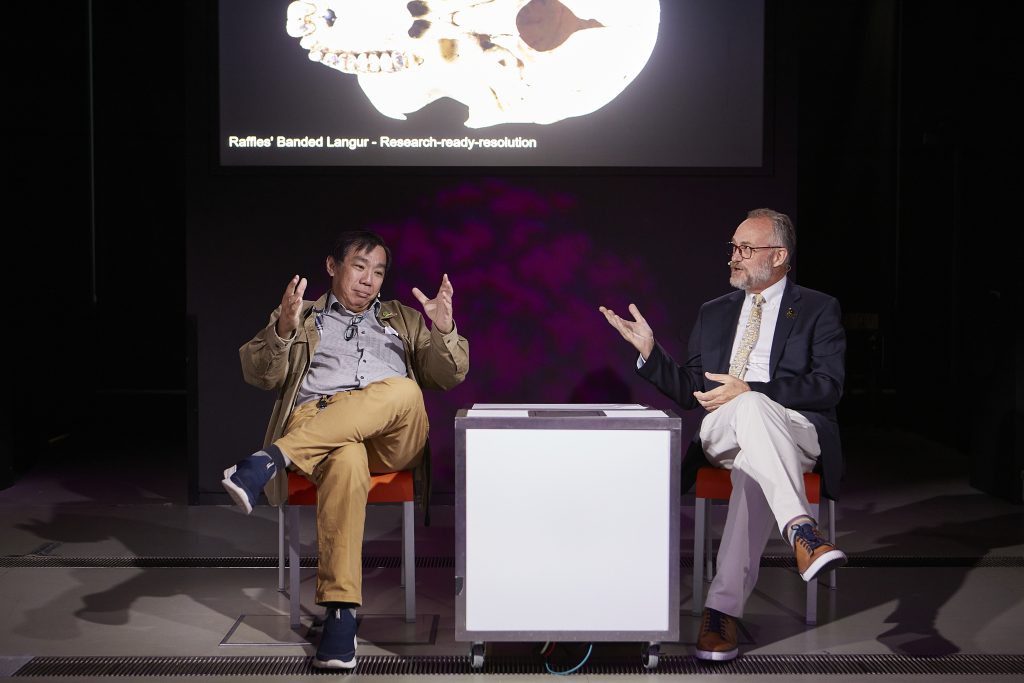
Prof Peter Ng and Dr Tim Littlewood sharing about the project at the Natural History Museum. (© The Trustees of the Natural History Museum)
Moreover, this project will also address crucial safety risks and challenges that come with international research that conventionally involves the movement of valuable specimens.
Due to their old age, many specimens are too fragile to transport overseas and can be met with unexpected border risks, resulting in catastrophic consequences. Such is a case in 2017 when miscommunication led to the destruction of priceless plant type specimens by border authorities that justifiably need to maintain quarantine controls. The digitisation of these irreplaceable specimens can help to ensure their safety and reduce the risk of them getting lost or stolen during transit.
Anytime-anywhere-anyone access and reducing carbon emissions at the same time
In addition, researchers can also benefit from savings in time and travel expenditure by not having to travel across long distances to study these specimens. This will help to reduce the (unnecessary) carbon emissions that come from flying and resources.
One of our guests, Mr Daniel Tham, Curatorial Lead at the National Museum of Singapore, says “I think it’s really exciting that this project has started because with digitisation, the world is definitely a much smaller place now. We are able to access information from the comfort of our homes (and) from our offices… (W)hen we are talking about research, that is so important. What we previously had to do in terms of flying between two different institutions (and things like) requesting to gain access… Right now, all that is cut short. We’re able to do that immediately and I think that means that we are able to firstly, really go straight into the research itself. And I think secondly, to explore things that otherwise we just would not even have thought of approaching.”
SIGNIFY’s website is now LIVE and can be publicly accessed here.
For more information, visit SIGNIFY’s Facebook, Instagram and Twitter accounts.
The project receives generous support from Mr Terence Anthony McNeice (in honour of Sir Percy McNeice), the Lee Foundation and Mr Goh Geok Khim.
Catch up on the livestreamed event here:


